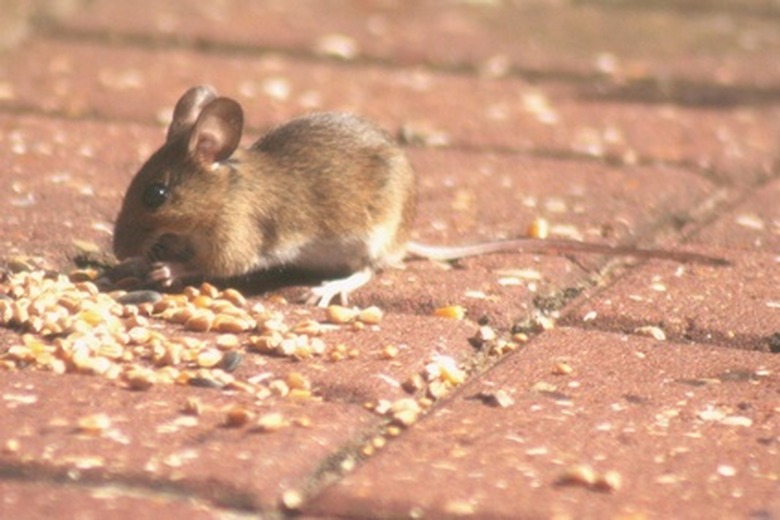How To Keep Voles From Eating Flower Bulbs
Things Needed
- Steel wool
- Lawnmower (optional)
- Mousetraps
- Chemical repellents (optional)
- Natural repellents
- Live trap(s) (optional)
Voles are a little larger than mice and have short tails instead of long ones. Voles spend their lives under the soil surface, as opposed to mice, which have adapted to many different environments. Flower bulbs are one of the vole's favorite garden foods, so if you cherish your daffodils, tulips, Dutch iris, gladiolas, narcissus and other flowers that come from bulbs, you'll want to control the population of voles in your yard by using some simple, natural methods, or chemical remedies if your vole population is large.
Keeping Voles Away From Your Flower Bulbs
Step 1
Insert steel wool into vole tunnels. The Internet Center for Wildlife Damage Management states that voles create spreading surface runways one to two inches wide. They contain many openings—stuff steel wool into as many of these openings as you can find.
Step 2
Eliminate all dense vegetation in your yard that might give cover to voles. Keep your lawn mowed short and remove all grassy weeds and other plants that cover the ground, especially near areas where you grow bulbs.
- Voles are a little larger than mice and have short tails instead of long ones.
- Flower bulbs are one of the vole's favorite garden foods, so if you cherish your daffodils, tulips, Dutch iris, gladiolas, narcissus and other flowers that come from bulbs, you'll want to control the population of voles in your yard by using some simple, natural methods, or chemical remedies if your vole population is large.
Step 3
Set mousetraps into burrow openings in fall and winter, with the trigger end pointing into the opening. The Internet Center for Wildlife Damage Management reports that effective baits include peanut butter, slices of apple and oatmeal.
Step 4
Use repellents, both chemical and natural, if you have a large population of voles. Colorado State University states that two chemical products, Thiram (a fungicide) and Hot Sauce (capsaicin), are approved for controlling voles. Critter Getter Online adds that the urine of certain predators, such as coyote or fox, can also be effective if you insert it into tunnels. Voles do not like the smell of eggs—if you combine 20 percent fresh chicken eggs in water and then insert small bowls of this mixture into tunnels, it can cause voles to leave the area. Critter Getter Online suggests sprinkling hot chili pepper flakes into tunnel openings, but cautions that you must repeat this application after you water or it rains.
- Set mousetraps into burrow openings in fall and winter, with the trigger end pointing into the opening.
- Critter Getter Online adds that the urine of certain predators, such as coyote or fox, can also be effective if you insert it into tunnels.
Step 5
Trap voles in live traps baited with apple slices, peanut butter or oatmeal. If you're an animal lover, this method might suit you. After you trap a vole, release it in a wild area far from your property.
Tip
Although mulch helps to keep weeds away from your bulb bed, it can also provide a hiding place for voles, so consider removing it. Mouse snap traps are most effective for controlling small vole populations.
Warning
Use caution and wear protective clothing if you must handle a vole, because these animals can carry diseases such as plague. The Internet Center for Wildlife Damage Management cautions against shooting voles. Do not release live voles onto neighbors' property.
